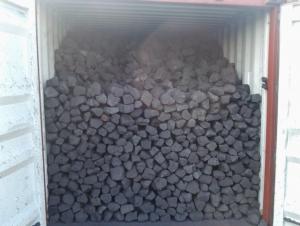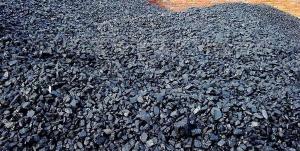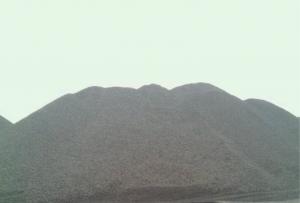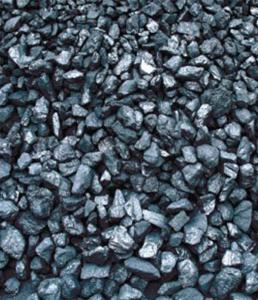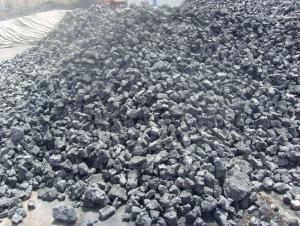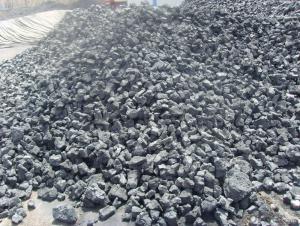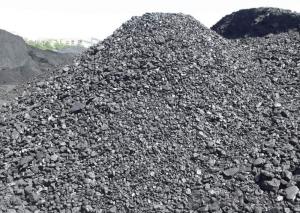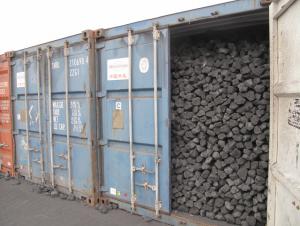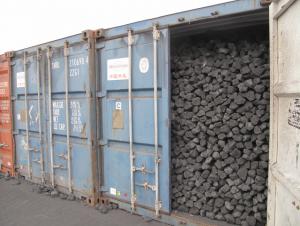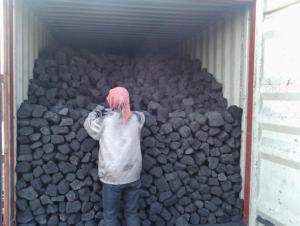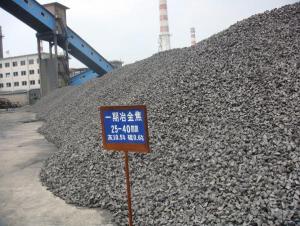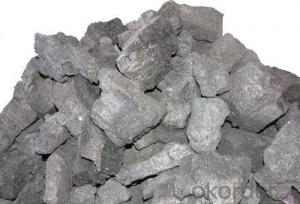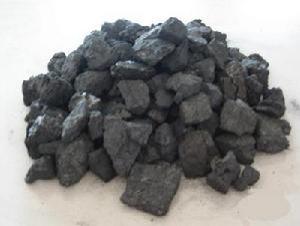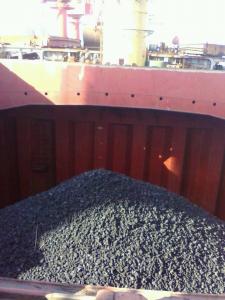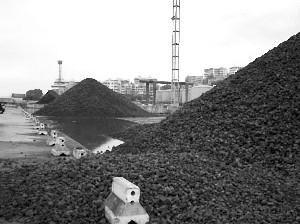Metallurgical Coke of Coke Strength after Reactivity 65
- Loading Port:
- Tianjin
- Payment Terms:
- TT OR LC
- Min Order Qty:
- 100 m.t.
- Supply Capability:
- 3000 m.t./month
OKorder Service Pledge
OKorder Financial Service
You Might Also Like
1. Structure of Met Coke of Coke Strength after Reactivity 65 Description:
Coke is made by high temperature metallurgical coke for blast furnace smelting, casting and gasification. Occurring in the process of coking after recovery and purification of coke oven gas is a high calorific value of fuel, is an important industrial raw material in organic synthesis.
Our country's metallurgical industry has a long history, is the original fuel charcoal smelting industry, due to the charcoal burning temperature is lower, and short duration of fire and not easy to master hour, therefore, directly affect the level of smelting, to make the steel quality is not guaranteed. Later, people use coal as smelting, coal combustion temperature is higher, and the combustion duration is longer than charcoal, but easily broken after coal is heated in the oven, affect the burden of permeability, and high content of sulfur in coal, directly affect the quality of the cast iron. After a period of practice, it has been found that the coal after dry distillation (i.e., separated flame heating), volatile components may be removed, and the porosity increased, resembling charcoal, fire is better than that of coal, but also can avoid charcoal and coal. This after carbonization of coal is coke.
2. Main Features of the Met Coke of Coke Strength after Reactivity 65:
• Quality assurance
• Mutual benefit
3. Met Coke of Coke Strength after Reactivity 65 Images:
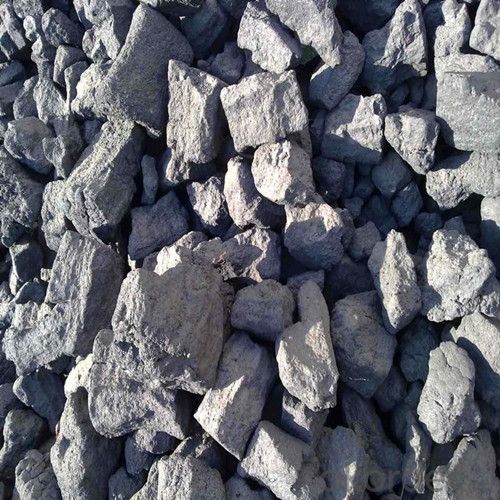
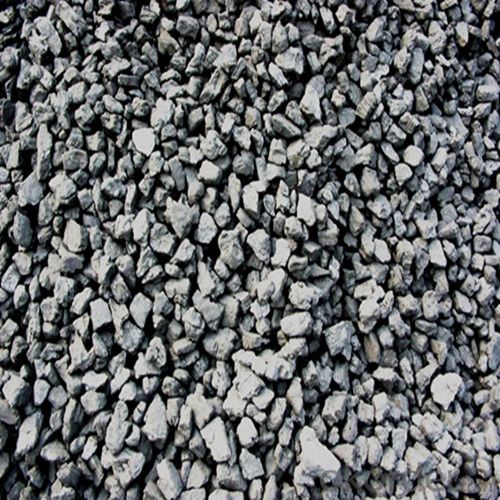
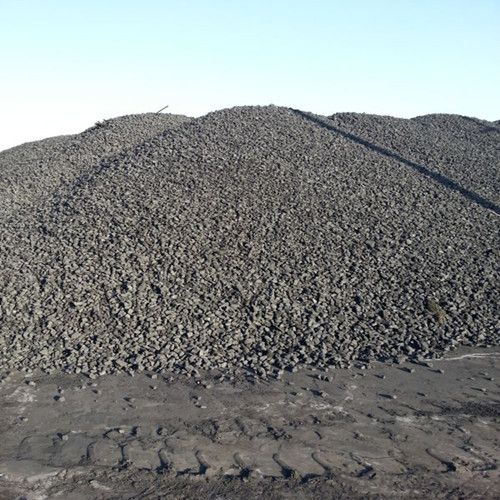
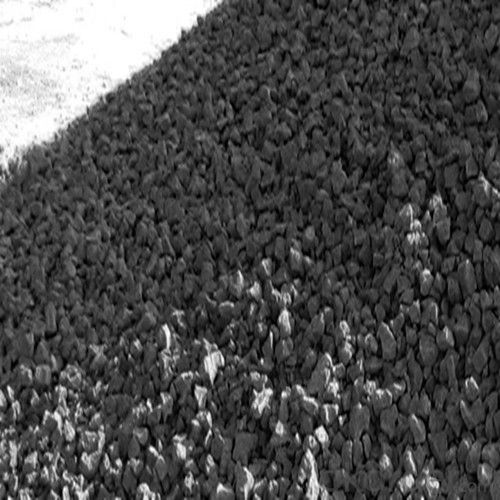
4. Met Coke of Coke Strength after Reactivity 65 Specification:
Parameters | Guarantee | Rejection |
Total Moisture (As received basis) | 5% max | |
Ash (dry basis) | 12.5% max | > 13.5% |
Volatile Matter (dry basis) | 1.5% max | > 1.8% |
Sulphur (dry basis) | 0.65% max | > 0.75% |
Phosphorus (dry basis) | 0.035% max | > 0.045% |
M10 | 7% max | > 9% |
M40 | 84% min | <82% |
CSR | 65% min | <63% |
CRI | 25% max | > 27% |
Size 30-90 mm | 90% min | |
+90 mm | 5% max | > 8% |
-30mm | 5% max | > 8% |
5. FAQ
We have organized several common questions for our clients,may help you sincerely:
1) What are coke's main physical properties?
on the relative density of density, coke, coke porosity, thermal conductivity for the heat capacity of coke, coke, coke, coke ignition temperature, coke thermal expansion coefficient of thermal stress and coke, coke shrinkage rate, coke resistivity permeability, etc.
The average heat capacity is 0.808 kj/(KGK) (100 ℃), 1.465 kj/(KGK) (1000 ℃)
Thermal conductivity is 2.64 kj/(MHK) (room temperature), 6.91 kj/(MHK) (900 ℃);
Ignition temperature (air) is 450-650 ℃.
2)Main type
Metallurgical coke is blast furnace coke, coke, iron alloy and nonferrous metal smelting with coke. As more than 90% of the metallurgical coke for blast furnace ironmaking, so often called the blast furnace coke metallurgical coke.
Foundry coke is dedicated to cupola molten iron. Coke is the main fuel of cupola molten iron. Its role is hot metal melting furnace charge and overheating, support stock column maintain its good air permeability. As a result, coke blocks should have large, low reactivity, low porosity, with sufficient impact crushing strength, ash content and low sulfur content.
In China, "natural coke" used as a fuel. Underground coal seam spontaneous combustion, and can also form natural coke. Natural coke, the grey to dark grey color, more porous, can sometimes show hexagonal prism shape. Compared with artificial coke, weight big, small porosity, density.
- Q:Coking coal, coke, coal, steam coal what is the difference?
- Coal is used to generate electricity, which is used to burn coalPower coal is generally only coal
- Q:What are the ingredients of coke
- The chemical composition of coke including fixed carbon, ash, sulfur, volatile matter and moisture. Except moisture, other ingredients in dry coke as basis.
- Q:Natural gas can replace coke smelting pig iron
- Coke at high temperature (also some blast furnace pulverized coal, heavy oil, natural gas and other auxiliary fuel) in carbon with bubbling air oxygen in the combustion of carbon monoxide and hydrogen generated in the furnace, removing the rise in iron ore in the process of oxygen, thereby reducing iron. The molten iron is released from the taphole. An iron ore, which is a mixture of non - reducing impurities, such as limestone, to form a slag from the slag. The produced gas is discharged from the top of the furnace, and is used as a fuel for a hot blast stove, a heating furnace, a coke oven, a boiler, etc.. Blast furnace smelting is the main product of pig iron, as well as by-products of blast furnace slag and blast furnace gas.
- Q:Said the details can add points ah
- 50 kilograms of size greater than 60 mm coke coke samples, in meters Qom in the drum at 50 rpm speed of 100 revolutions (4 minutes), with the aperture is 40 mm (25 mm) sieve screening, measuring more than 40 mm (25 mm) and the weight percentage of the coke, the total weight of the coke drum, denoted as M40 (or M25).
- Q:Coke is how to participate in the steel, and the pellets, sintering, a piece of the furnace in the furnace or in other containers
- Molten iron is produced in a reducing atmosphere of the blast furnace, which is then supplied to the steelmaking plant for steelmaking.
- Q:Listen to a lot of people say that steel is now coke is not true?
- With the rapid development of the domestic and international iron and steel industry, the demand for coking products is increasing rapidly, the investment is heating up, and the industry is expanding rapidly. But the coking industry of high resource consumption, production and emissions, especially the emissions of harmful substances, causing serious waste of resources and environmental pollution, brings great pressure to the sustainable development of national economy, which also hindered the rapid development of coking industry.
- Q:I work in the coking plant, so there are conditions to get coke and is burning, I would like to use coke barbecue line? Just like charcoal Mutton Cubes Roasted on a Skewer, OK? Understand the answer
- Under the condition of air isolation, the bituminous coal is heated to 950-1050 DEG C, which is finally made into coke by drying, pyrolysis, melting, bonding, solidification and shrinkage.
- Q:The coke is divided into several separate uses
- Gasification coke is used for the production of coke gas. The utility model is mainly used in a fixed bed coal gas producer with solid slag discharging, and is used as a gasification raw material to produce CO and H2 as combustible components. The main reaction of gasification process:C+O2 - CO2+408177KJ
- Q:8 points will be isolated from the air to enhance the heat of coal, in addition to the main coke, but also the material listed in the following table: No.
- Ethylene containing carbon carbon double bond can add poly to generate polyvinyl chloride, can be used for food packaging, reaction equation is: nCH2=CH2Initiator,The answer is: nCH2=CH2Initiator;
- Q:What's the difference between coke and coke?
- In the process of coal carbonization of coal material: when the temperature is higher than 100 degrees in coal water evaporation; the temperature rises to 200 degrees above, combined with the release of water in coal; up to 350 DEG C, caking coal begin to soften, and further the formation of colloid viscous (this phenomenon does not occur, peat lignite; etc.) to 400 ~ 500 degrees most of the gas and tar precipitation, called a thermal decomposition products; at 450 to 550 DEG C, the thermal decomposition continues, gradually thickening and curing the formation of residue char!
1. Manufacturer Overview |
|
|---|---|
| Location | |
| Year Established | |
| Annual Output Value | |
| Main Markets | |
| Company Certifications | |
2. Manufacturer Certificates |
|
|---|---|
| a) Certification Name | |
| Range | |
| Reference | |
| Validity Period | |
3. Manufacturer Capability |
|
|---|---|
| a)Trade Capacity | |
| Nearest Port | |
| Export Percentage | |
| No.of Employees in Trade Department | |
| Language Spoken: | |
| b)Factory Information | |
| Factory Size: | |
| No. of Production Lines | |
| Contract Manufacturing | |
| Product Price Range | |
Send your message to us
Metallurgical Coke of Coke Strength after Reactivity 65
- Loading Port:
- Tianjin
- Payment Terms:
- TT OR LC
- Min Order Qty:
- 100 m.t.
- Supply Capability:
- 3000 m.t./month
OKorder Service Pledge
OKorder Financial Service
Similar products
New products
Hot products





